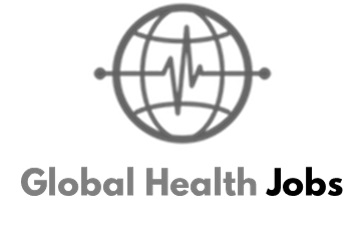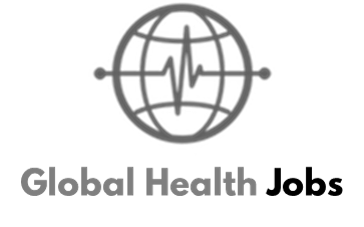Introduction:
Overview of USAID Uganda Health Systems Strengthening (UHSS) Activity:
The U.S. Agency for International Development (USAID) Uganda Health Systems Strengthening (UHSS) Activity aims to address health systems constraints by strengthening leadership and accountability for results across all levels of the health system; increasing availability and management of key health systems resources, including human resources for health; and strengthening community systems for quality health services. This is premised on the fact that health service delivery in Uganda is constrained by a fragmented and under-resourced health system, leadership and accountability challenges, dependency on external funding in a bid to fill the funding gap occasioned by left by sub-optimal Government financing, and sub-optimally functioning community health systems. This is in line with the achievement of Development Objective 3 of the USAID Uganda Country Development Cooperation Strategy (CDCS) 2016–2021 of “Key systems’ accountability and responsiveness to Uganda’s development needs improved.”
UHSS support is mainly through provision of technical assistance that aim at improving leadership and accountability for results in public and private sub-sectors at national, subnational and community level as well as increased availability and management of health system resources for improved efficient use, governance, and management of resources among others.
UHSS is providing technical support to the Ministry of Health (MoH) two critical pieces of analytics that include an assessment of private wings of Regional Referral Hospitals (RRHs) to establish barriers that prevent their optimal performance and development of a standard Community Health Workers (CHW)-to-Population ratio as part of MoH and partners effort of setting a threshold for CHWs for their improved quality and performance at the community level.
Background to the consultancy
I. Assessment of private wings of Regional Referral Hospitals (RRHs)
In many low-income countries, domestic spending on health is expanding at a pace that is unlikely to match the rate of increase of health financing needs unless new funding sources are found, and more efficient delivery mechanisms are implemented. As this reality dawns, it is important to harness the potential of alternative financing options including private wings in public hospitals as potential sources of increasing financing of the health system. Literature shows that establishing well-functioning private wings at public hospitals can result in retention of staff, increase access to services and client satisfaction as well as increased revenue flows to public hospitals and thereby contribute to the achievement of Universal Health Coverage (UHC). Successful implementation of private wing programs also subsidizes regular health services at the public hospitals.
As part of the Government of Uganda (GoU) efforts to expand domestic resource mobilization for health, alternative health financing sources that include private wings, user fees, social health insurance and community resource mobilization were identified through the Health Sector Strategic Plan/ Health Sector Development plan of 2015/16- 2019/20 as potential avenues for increasing funding to the health sector. The private wings were therefore introduced as avenues to raise additional funds to improve the quality of services and increase the take home package for health workers in public facilities. A number of hospitals that include National and Regional Referral Hospitals have established private wings that provide affordable and quality health care. Although the private wings have been applauded as a big benefit to the health sector, they are faced with numerous challenges that prevent them from operating at optimal capacity. As a basis for revitalizing the private wings in RRHs, there is need therefore to understand their current status, factors responsible, and use these to formulate practical recommendations that will optimize performance of the private wings.
II. Development of the Community Health Worker (CHW)-to-Patient Ratio
Community health workers (CHWs) continue to play a crucial role in supporting health service delivery globally. Optimum CHW-Population Ratio is a major concern to the USAID and MoH in Uganda. Community health workers have potential to enhance primary care access and quality but remain underutilized. The CHW-Patient Ratio is essential for patients’ safety and overall quality of care and to find out the ideal CHW-to-Patient ratio at a given time. This determination will require a workload analysis based on the research evidence and CHW staffing footprint in the country.
It is a difficult question to answer how many CHWs will be sufficient for a particular type of community health services. However, decisions on the optimum level of CHW-to-Patient Ratio depend on the several factors such as catchment population, number of services provided by the CHW, the number of CHWs in the community, availability of resources, level of effort expected of the CHWs? Optimization may include harnessing the role of CHWs to contribute to comprehensive, client-centered care. This may include for HIV testing, referrals, ART adherence counseling and retention, as well as nutrition, prevention of mother-to-child transmission (PMTCT), health promotion, prevention, and the management of co-morbidities, including non-communicable diseases and mental health.
The World Health Organization (WHO) Global Strategy on Human Resources for Health: Workforce 2030 sets out the policy agenda to ensure a workforce that is fit for purpose to attain the targets of the Sustainable Development Goals (WHO,2016). Establishing a standard CHW-to-Patient ratio as part of setting a threshold for CHWs for improved quality and performance of CHWs at the community level will therefore guide investment in CHWs by the government and development partners.
Objectives of the consultancy:
I. Assessment of private wings of Regional Referral Hospitals (RRHs): The main objective of the assessment is to document the current situation and performance of the private wings of RRHs and recommend the necessary policy and institutional reforms required to improve their effectiveness, efficiency, and sustainability.
II. Development of the Community Health Worker (CHW)-to-Population Ratio: The main objective of the assignment is to generate a standard CHW-to-Patient ratio that is acceptable for adoption by the MoH, USG and other partners including WHO
Scope of work:
To achieve the above objectives, consultancy will undertake the following in consultation with focal persons provided by UHSS and MOH:
Assessment of private wings of Regional Referral Hospitals (RRHs):
· Generate research protocol for establishing the current status, performance of the RRHs private wings and the related contributing factors with respect to their effectiveness and sustainability.
· Identify barriers at various levels that include policy, regulatory and institutional, design and governance factors, operational and financial support that hinder the private wings from realizing their full potential. Critical issues will be analyzed and discussed from the perspectives of different stakeholders involved in the running of private wings such MoH, RRHs, MoFPED, patients, etc.
· Based on findings of the assessment, the consultant will propose feasible actions that can be taken by the MoH and UHSS to support RRHs to overcome barriers and strengthen improved performance of RRHs private wings and promote twinning partnerships between RRHs that have better functioning with those with poorly performing private wings.
· Based on the key findings of the assessment, the consultant will propose feasible actions that can be taken by the MoH and UHSS to support a selected number of RRHs to overcome barriers and strengthen improved performance of RRHs private wings and promote twinning partnerships between RRHs that have better functioning with those with poorly performing private wings.
Development of the Community Health Worker (CHW)-to-Patient Ratio
· Review the relevant literature to understand the CHW situation in Uganda and globally
· Design a model or adopt an existing model that will seek to establish the CHW-to-Patient ratio in consultation in a consultative and collaboration process with the various players including MoH, USG, Implementing Partners, WHO etc.
· Respond to the following questions.
a. What is the CHW footprint in the country?
b. What is the average number of patients see per day by the CHW?
c. What is the average number of hours they spend seeing patients by CHW?
d. What is the average number of hours they spend on reporting and paperwork?
e. What are the different services provided by the community worker?
f. What is the level of effort the CHWs?
g. What is the level of engagement for the CHWs?
· Establish the staffing needs for implementing one or a combination of health services at the community level with expected service standards.
· Conduct a Workload Indicator of Staffing Needs (WISN) to establish workload standards to establish the total time it requires a CHW to deliver the expected services in the community
· Examine the management structures for CHW including their remuneration, terms of engagement, retention opportunities, workload, CHW task
· Develop a standard CHW-to-client ratio that support WHO recommendation on CHWs
Expected Deliverables:
For each of the two components, the consultant will provide the following deliverables:
· Inception Report that describes the technical approach and implementation timelines.
· Draft reports with data sets.
· Final reports that incorporate comments from stakeholders
· Power point presentations
Summary of deliverables
Key deliverables
Number of days
Due date after commencement
% of total amount to be paid
Assessment of private wings of Regional Referral Hospitals (RRHs)
Inception reports that describe the assessment methodology and implementation timelines
4
Data collection tools
5
Draft assessment report with recommendations
10
Final assessment report that incorporates comments from stakeholders
8
Power point presentation
4
Development of the Community Health Worker (CHW)-to-Population Ratio
Protocol for developing the CHW-to-population ratio showing literature review, objectives, methods and tools and schedules for completing assigned work.
5
Draft report
10
Final report that incorporate comments from stakeholders
8
Power point presentation
4
Qualification and experience of the consultant
The consultant will have a combination of the following qualification and experience:
Advanced degree in Public Health, Health Financing, Health Systems Research, or their equivalents.
5+ years’ experience of conducting health systems research, preferably health financing, including costing of health services.
Demonstrated expertise in both quantitative and qualitative research skills along with requisite computer / statistical skills
Demonstrated knowledge and understanding of the health sector including the private health sector and community health systems
Experience and knowledge of operation of RRHs and their private wings will be an added advantage
Excellent analytical and writing skills.
Good inter-personal and communication skills.
Submission guidelines
All interested parties are required to submit their expressions of interest, technical and financial proposals (in Ugandan Shillings) highlighting their experience, qualifications, names, and contacts of three referees, methodical approach, and Gantt chart detailing when activities will be taking place, for completing the deliverables.
Closing date:
Applications will close on Wednesday March 23rd, 2022, at 1800hrs East African time
Apply now
Share
Save Job
More Information
- £ Salary Offer POA
- $ Salary Offer POA
- Experience Levels Senior
- Total Years of Experience 0-5




